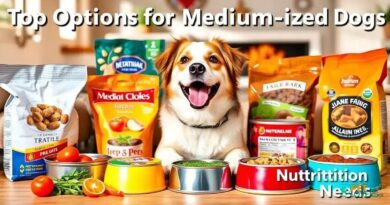O que é choking hazards
What is Choking Hazards?
Choking hazards refer to objects or substances that pose a risk of obstructing the airway, particularly in pets like dogs. Understanding what constitutes a choking hazard is crucial for pet owners, as it can prevent serious health issues and even save lives. Common choking hazards for dogs include small toys, bones, and certain types of food that are not appropriate for canine consumption. Recognizing these dangers is the first step in ensuring your dog’s safety and well-being.
Common Choking Hazards for Dogs
There are numerous items that can become choking hazards for dogs. Small toys, especially those that can be easily swallowed, are among the most common culprits. Additionally, certain types of food, such as grapes, nuts, and large chunks of meat, can pose significant risks. Even everyday household items like rubber bands, strings, and plastic bags can lead to choking incidents. Pet owners must be vigilant and aware of these potential dangers in their environment.
Signs of Choking in Dogs
Recognizing the signs of choking in dogs is vital for prompt intervention. Symptoms may include gagging, coughing, pawing at the mouth, excessive drooling, and difficulty breathing. In severe cases, a dog may become unresponsive or exhibit signs of distress. If you notice any of these symptoms, it is essential to act quickly and seek veterinary assistance. Knowing how to respond can make a significant difference in the outcome of a choking incident.
How to Prevent Choking Hazards
Preventing choking hazards involves a proactive approach to your dog’s environment. Start by removing small objects that could be swallowed, such as coins, buttons, and small toys. When it comes to food, ensure that you are providing appropriate portions and types that are safe for dogs. Additionally, supervise your dog during playtime and mealtime to quickly address any potential choking risks. Creating a safe space for your pet can significantly reduce the likelihood of choking incidents.
First Aid for Choking Dogs
If your dog is choking, knowing how to perform first aid can be lifesaving. The Heimlich maneuver for dogs involves placing your hands just below the ribcage and applying quick, upward thrusts. If the dog is small, you may need to hold them upside down and give a few firm pats on the back. Always remain calm and act quickly, as every second counts in a choking emergency. After addressing the choking, it is crucial to take your dog to the veterinarian for a thorough examination.
Choosing Safe Toys for Dogs
Selecting safe toys for your dog is essential in minimizing choking hazards. Opt for toys that are specifically designed for dogs, avoiding those with small parts that can be easily chewed off. Rubber toys, rope toys, and plush toys with reinforced seams are often safer choices. Always inspect toys regularly for wear and tear, and replace them if they show signs of damage. Educating yourself about safe toys can help keep your dog entertained without the risk of choking.
Understanding Dog Chewing Habits
Dogs have natural chewing instincts, and understanding these habits can help prevent choking hazards. Some dogs are aggressive chewers and may break toys into small pieces, increasing the risk of choking. Providing appropriate chew toys that are durable and designed for heavy chewers can help satisfy their urge to chew while minimizing risks. Additionally, monitoring your dog’s chewing behavior can help you identify any potential hazards before they become a problem.
Emergency Preparedness for Dog Owners
Being prepared for emergencies, including choking incidents, is essential for dog owners. Keep a first aid kit specifically for your pet, including items such as gauze, antiseptic wipes, and a muzzle. Familiarize yourself with local veterinary clinics and emergency animal hospitals in case you need immediate assistance. Additionally, consider taking a pet first aid course to equip yourself with the knowledge and skills necessary to handle choking and other emergencies effectively.
Consulting Your Veterinarian
Regular consultations with your veterinarian can provide valuable insights into your dog’s health and safety. Discuss any concerns you have regarding choking hazards and seek advice on safe toys and foods for your pet. Your veterinarian can also guide you on how to recognize signs of distress in your dog and what steps to take in case of an emergency. Building a strong relationship with your vet can enhance your ability to keep your dog safe from choking hazards.



